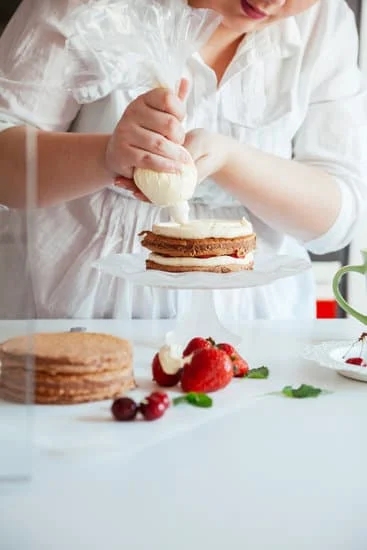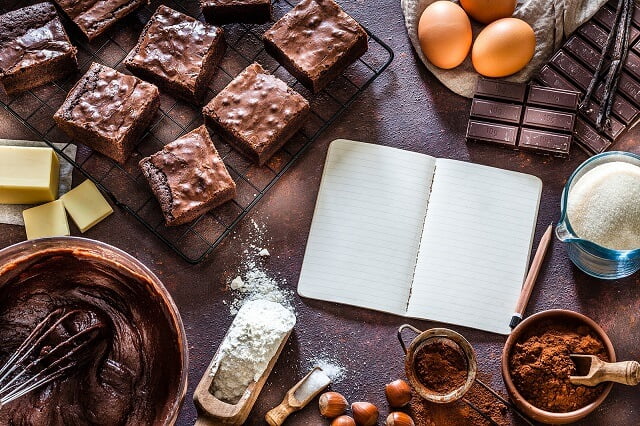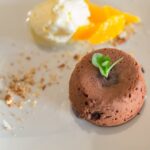Buttercream frosting recipes for cake decorating are essential for creating beautifully decorated cakes that taste as good as they look. Buttercream frosting is a versatile and delicious topping that can be used to cover, fill, and decorate all kinds of cakes. Its smooth texture and ability to hold intricate designs make it a favorite among bakers and decorators.
In the world of cake decorating, buttercream frosting reigns supreme for its creamy texture and ability to hold its shape when piped onto cakes. There are several types of buttercream frostings, such as American buttercream, Swiss meringue buttercream, and Italian buttercream, each with its own unique characteristics and flavors. Understanding the differences between these variations can help bakers choose the right one for their specific cake decorating needs.
Whether you’re a beginner or experienced baker, having a great buttercream frosting recipe in your arsenal is key to creating stunning cakes. From classic vanilla buttercream to rich chocolate options, the possibilities are endless when it comes to flavoring buttercream. In this article, we will explore different types of buttercream frosting recipes, techniques for achieving perfect consistency, and tips for adding flavor and color to your creations.
Different Types of Buttercream Frosting
Buttercream frosting is a versatile and essential component in cake decorating, offering a creamy and delicious finishing touch to any baked creation. There are several variations of buttercream frosting, each with its unique characteristics and flavor profiles. In this section, we will delve into the differences between American buttercream, Swiss meringue buttercream, and Italian buttercream to help you choose the perfect one for your cake decorating needs.
American Buttercream
American buttercream is perhaps the most popular and straightforward type of buttercream frosting. Made with just a few simple ingredients like butter, powdered sugar, vanilla extract, and milk or cream, this frosting is quick and easy to whip up. The texture of American buttercream tends to be slightly grainier compared to other types, but its sweet taste makes it a favorite for many bakers. It is perfect for spreading on cakes or piping decorations due to its sturdiness.
Swiss Meringue Buttercream
Swiss meringue buttercream takes a bit more effort to make but results in a silky-smooth texture that melts in your mouth. This frosting is made by gently heating egg whites and sugar over a double boiler until the sugar dissolves, then whipping the mixture into stiff peaks before incorporating softened butter.
The addition of butter gives Swiss meringue buttercream a luxurious taste that pairs well with delicate cake flavors. It is ideal for creating elegant decorations on wedding cakes or special occasion desserts.
Italian Buttercream
Italian buttercream is considered the most luxurious and sophisticated type of buttercream frosting. Similar to Swiss meringue buttercream, Italian buttercream involves making a meringue base by heating sugar syrup to the soft-ball stage before slowly pouring it into whipped egg whites. Once cooled, softened butter is added gradually to create a rich and creamy consistency.
Italian buttercream has a stable structure that holds up well in warm environments, making it suitable for elaborate cake designs and intricate piping work. Its velvety texture makes it a decadent choice for those looking for an indulgent dessert experience.
By understanding the differences between American, Swiss meringue, and Italian buttercreams, you can choose the best option based on your preferences and intended cake decorating style. Whether you prefer simplicity or luxury in your frosting choices, experimenting with these variations will elevate your baking creations to new heights.
The Best Buttercream Frosting Recipe for Cake Decorating
Ingredients
- 1 cup unsalted butter, softened
- 4 cups confectioners’ sugar
- 2 tsp vanilla extract
- 2-4 tbsp heavy cream
Instructions
- In a large mixing bowl, beat the softened butter until creamy and smooth.
- Gradually add the confectioners’ sugar, one cup at a time, mixing well after each addition.
- Pour in the vanilla extract and heavy cream, starting with 2 tablespoons and adding more if needed for desired consistency.
- Continue to beat on high speed for about 3-5 minutes until the frosting is light and fluffy.
Variations
For a chocolate buttercream frosting, simply mix in cocoa powder to taste while adding the confectioners’ sugar. For a tangy twist, substitute some of the vanilla extract with fresh lemon juice or orange zest. You can also experiment with other extracts like almond or coconut for a unique flavor profile.
This versatile buttercream frosting recipe is perfect for crumb coating cakes before final decoration as it spreads easily and holds its shape when piped. The silky texture makes it ideal for creating smooth finishes on cakes or intricate designs using different piping tips. Whether you’re decorating a birthday cake, wedding cake, or simple cupcakes, this recipe is sure to elevate your creations with its creamy richness and sweet flavor.
Tips for Perfect Buttercream Consistency
Buttercream frosting consistency is an essential factor in cake decorating. The right texture can make a significant difference in the overall look and feel of your cake design. Achieving the perfect consistency involves striking a balance between being easy to spread or pipe while also holding its shape well. To achieve this ideal texture, it’s crucial to pay attention to the ingredients used, the mixing method, and the temperature.
One key tip for achieving perfect buttercream consistency is to ensure that your butter is at the correct temperature before beginning. It should be soft enough to easily cream with sugar but not so warm that it becomes greasy or loses structure. Room temperature butter is typically ideal for most buttercream recipes, as it allows for smooth incorporation with other ingredients without being too soft.
Another important aspect of achieving the right buttercream consistency is controlling the amount of liquid added. Whether using milk, cream, or another liquid flavoring agent, adding too much can result in a runny frosting that won’t hold its shape when piping decorations on your cakes.
Start by adding a small amount of liquid at a time and mix thoroughly before incorporating more. This method will help you gradually adjust the consistency until you reach your desired thickness for spreading or piping.
| Buttercream Consistency Tip | Key Information |
|---|---|
| Butter Temperature | Use room temperature butter for smooth incorporation without becoming too greasy. |
| Liquid Control | Add liquid flavoring agents slowly to avoid making the frosting runny and hard to pipe. |
Maintaining control over the mixing process is also crucial for achieving perfect buttercream consistency. Overmixing can lead to excess air being incorporated into the frosting, resulting in a light and airy texture that may not hold up well when decorating cakes. On the other hand, undermixing can leave you with a lumpy or grainy frosting that lacks smoothness and spreadability. Be sure to follow the recipe instructions regarding mixing times and techniques to ensure optimal results.
In addition to these tips, adjusting the amount of powdered sugar used in your buttercream recipe can also help you achieve the desired consistency. More powdered sugar will result in a stiffer frosting that holds its shape well for intricate piping designs, while less powdered sugar will yield a softer texture better suited for spreading smoothly over cake layers. Experimenting with different ratios of ingredients can help you find the perfect balance based on your specific decorating needs.
By paying attention to details like ingredient temperatures, liquid control, mixing techniques, and powdered sugar amounts, you can master the art of achieving perfect buttercream consistency for all your cake decorating endeavors. With practice and patience, you’ll be able to create beautifully decorated cakes with smooth, creamy frosting that tastes as good as it looks.
Flavoring Buttercream
Buttercream frosting is not only a versatile medium for cake decorating, but it also serves as the perfect canvas to infuse with a variety of flavors. Whether you’re a fan of classic tastes like vanilla or chocolate, or you want to experiment with more unique flavors like citrus or coffee, there are countless options to personalize your buttercream frosting. Adding unique flavors to your buttercream can elevate the taste of your cakes and desserts, making them even more memorable.
One popular flavor option for buttercream frosting is chocolate. By incorporating cocoa powder or melted chocolate into your buttercream recipe, you can achieve a rich and decadent chocolate-flavored frosting that is perfect for any chocolate lover. For those who prefer fruity and refreshing flavors, adding citrus zest or extracts such as lemon, orange, or lime can provide a tangy twist to your buttercream. The brightness of citrus pairs beautifully with sweet cakes, creating a harmonious balance of flavors.
If you’re looking to add a hint of sophistication and depth to your buttercream frosting, consider using coffee as a flavoring element. By dissolving instant espresso powder in hot water and mixing it into your buttercream, you can create a subtle coffee-infused frosting that complements flavors like chocolate or vanilla exceptionally well. Experimenting with different flavor combinations and techniques can make your buttercream frosting recipes for cake decorating truly unique and unforgettable.
| Flavor Option | How to Incorporate |
|---|---|
| Chocolate | Incorporate cocoa powder or melted chocolate into the buttercream recipe |
| Citrus | Add zest or extracts (e.g. lemon, orange, lime) for a tangy twist |
| Coffee | Dissolve instant espresso powder in hot water and mix into the buttercream for a subtle coffee flavor |
Coloring Buttercream
When it comes to cake decorating, one of the most crucial elements is the color of the frosting. Buttercream frosting provides an excellent canvas for creating vibrant and pastel colors that can truly elevate the design of your cakes. By mastering the art of coloring buttercream, you can achieve stunning results that will impress any audience.
Here are some tips on how to achieve vibrant and pastel colors in buttercream frosting for eye-catching cake designs:
- Start with a basic white buttercream base: Before adding any color, make sure your buttercream is a clean, bright white. This will provide a neutral background for your chosen colors to stand out.
- Use gel food coloring: Gel food coloring is more concentrated than liquid food coloring, which means you can achieve brighter colors without altering the consistency of your buttercream. Start with a small amount and gradually add more until you reach your desired shade.
- Combine colors for custom shades: Don’t be afraid to mix different gel food coloring shades to create custom colors for your buttercream frosting. This allows for endless possibilities when it comes to matching a specific color scheme or theme.
Adding color to buttercream frosting is not just about aesthetics; it’s also an opportunity to showcase creativity and enhance the overall look of your cakes. Whether you’re going for bold and bright hues or soft pastel tones, mastering the skill of coloring buttercream will take your cake decorating game to the next level.
So don’t be afraid to experiment with different colors and techniques to create visually stunning designs that will leave a lasting impression on everyone who sees (and tastes) your creations.
Buttercream Piping Techniques
Buttercream frosting is not just a practical element in cake decorating; it can also be used as a creative medium to elevate your cakes to new levels of artistry. Mastering buttercream piping techniques is essential for creating stunning decorative elements that will impress your guests. Whether you are a beginner or an experienced baker, exploring different piping tips and methods can take your cake decorating skills to the next level.
To showcase the versatility and beauty of buttercream frosting, here are some essential piping techniques that you can use to create eye-catching designs:
- Star Piping: Using a star-shaped piping tip, you can create beautiful rosettes, swirls, and borders on your cakes. This classic technique adds texture and elegance to any cake design.
- Shell Piping: With a shell-shaped piping tip, you can create delicate shell borders or intricate shell patterns that mimic the appearance of seashells. This technique is perfect for beach-themed cakes or wedding confections.
- Ruffle Piping: Ruffle piping involves creating soft, flowing waves of buttercream on the surface of the cake. By using a petal or leaf-shaped piping tip, you can achieve a whimsical and romantic look for special occasions like birthdays or bridal showers.
Experimenting with various piping tips and methods allows you to unleash your creativity and personalize your cakes according to different themes or events. From elegant floral designs to playful patterns, buttercream frosting offers endless possibilities for unique and customized cake decorations. By mastering these buttercream piping techniques, you can turn a simple cake into a work of edible art that will leave a lasting impression on your guests. Start practicing these techniques today and watch your cake decorating skills flourish.
Troubleshooting Buttercream Issues
In conclusion, mastering the art of buttercream frosting recipes for cake decorating involves a deep understanding of not only the different types and flavors but also how to troubleshoot common issues that may arise during the process. As you embark on your journey to create stunning cakes adorned with beautifully piped buttercream designs, remember that practice makes perfect. Experiment with various techniques, colors, and flavor combinations to develop your unique style and taste preferences.
When faced with challenges like a grainy texture in your buttercream, consider using finer sugar or ensuring proper mixing techniques to achieve a smooth consistency. To prevent air bubbles from forming in your frosting, avoid overmixing and gently tap the bowl on the counter to release any trapped air pockets. If you find your buttercream deflating or losing its volume, try chilling it for a few minutes before re-whipping to regain its structure.
Overall, with patience and attention to detail, you can overcome any buttercream frosting issues that come your way. By following the tips provided in this guide and experimenting with different recipes and decorations, you will soon be creating delectable cakes that not only look visually appealing but also taste delicious. So go ahead, unleash your creativity in the world of cake decorating with these versatile and flavorful buttercream frosting recipes.
Frequently Asked Questions
Which Buttercream Is Best for Decorating a Cake?
The best buttercream for decorating a cake is Swiss meringue buttercream. It is smooth, creamy, and stable, making it perfect for piping intricate designs and creating a flawless finish on cakes.
What Frosting Is Used for Decorating Cakes?
When it comes to frosting used for decorating cakes, decorators often turn to American buttercream or cream cheese frosting. American buttercream is quick to make and easy to flavor, while cream cheese frosting adds tanginess and richness that pairs well with various cake flavors.
What Is the Trick to Buttercream Frosting?
The trick to achieving the perfect buttercream frosting lies in proper temperature control. It is crucial to have all the ingredients at room temperature before mixing them together.
This ensures a smooth consistency and prevents the butter from clumping or becoming too runny. Additionally, whipping the frosting for the right amount of time will result in a light and fluffy texture that is easy to work with when decorating cakes.

Welcome to our cake decorating blog! My name is Destiny Flores, and I am the proud owner of a cake decorating business named Cake Karma. Our mission is to provide delicious, beautiful cakes for all occasions. We specialize in creating custom cakes that are tailored specifically to each customer’s individual needs and tastes.





